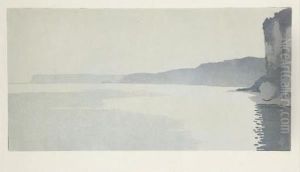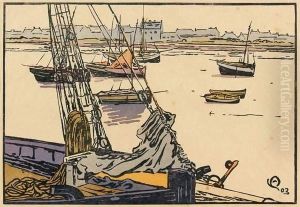Amedee Joyau Paintings
Amedée Joyau was a relatively obscure but deeply talented French Impressionist painter, whose life was tragically cut short at the young age of 31. Born in Saint-Étienne, France, in 1882, Joyau's artistic inclinations were evident from an early age. He pursued his passion for art by studying at the École des Beaux-Arts in Lyon, where he developed a keen interest in the Impressionist movement that was sweeping through the art world at the time.
Joyau's work primarily focused on landscapes and seascapes, characterized by a vibrant palette and a delicate handling of light, which captured the fleeting moments of beauty in everyday scenes. His technique showed a remarkable understanding of the Impressionist ethos, emphasizing the importance of natural light and color in creating atmospheric effects. Despite his talent, Joyau's career was not widely recognized during his lifetime, partly due to his untimely death and the overshadowing presence of more prominent Impressionists.
In 1913, at the age of 31, Amedée Joyau's life came to an abrupt end. The details surrounding his death remain vague, but it is known that his passing was a significant loss to the French art community, which had only just begun to appreciate his contribution to the Impressionist movement. Today, Joyau's works are considered rare and valuable, not only for their artistic merit but also for the poignant story they tell of a promising artist whose potential was never fully realized.
Despite the scarcity of his works and the brief span of his career, Joyau's paintings continue to attract attention from art historians and collectors alike. His oeuvre serves as a reminder of the fragility of life and the enduring power of beauty captured on canvas. Through the efforts of art historians and exhibitions, Amedée Joyau's legacy is gradually being reassessed, offering a glimpse into the life of an artist who, despite his premature demise, left an indelible mark on the world of French Impressionism.










